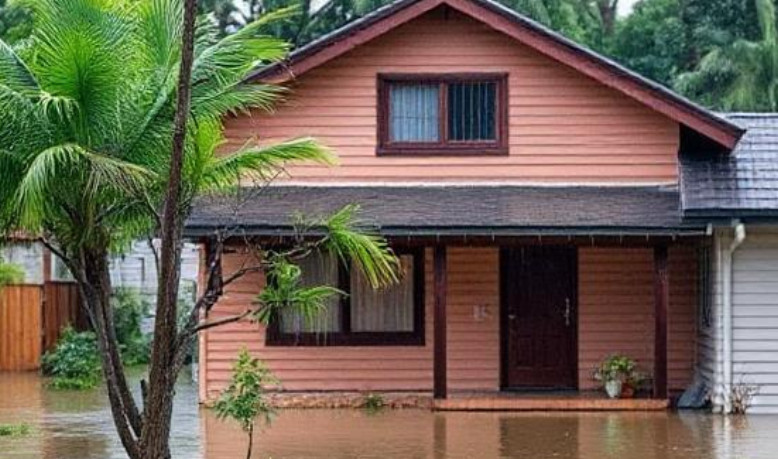Natural disasters such as floods and cyclones can cause significant damage to homes, businesses, and personal property. Filing an insurance claim after such an event can be a complex and stressful process. Proper preparation before, during, and after the disaster can help ensure a smoother claims process and maximize your compensation.
This guide provides a detailed, step-by-step approach to preparing for a flood or cyclone insurance claim, covering:
-
Understanding Your Insurance Policy
-
Pre-Disaster Preparation
-
Immediate Actions During and After the Event
-
Documenting Damage for Your Claim
-
Filing the Insurance Claim
-
Negotiating with the Insurance Company
-
Avoiding Common Mistakes
-
Seeking Professional Help if Needed

1. Understanding Your Insurance Policy
Before disaster strikes, it’s crucial to understand what your insurance policy covers. Many homeowners mistakenly assume that standard policies cover flood or cyclone damage, but this is not always the case.
Key Questions to Ask About Your Policy:
-
Does my policy cover flood or cyclone damage?
-
Standard homeowners’ insurance typically excludes flood damage, which usually requires separate flood insurance (e.g., through the National Flood Insurance Program (NFIP) in the U.S.).
-
Cyclone (or hurricane) damage may be covered under windstorm provisions, but some policies exclude named storms or require separate deductibles.
-
-
What is my deductible?
-
Some policies have higher deductibles for natural disasters (e.g., 2-5% of the insured value).
-
-
Are there coverage limits?
-
Policies may cap payouts for certain items (e.g., jewelry, electronics).
-
-
Does my policy include Additional Living Expenses (ALE)?
-
ALE covers temporary housing if your home is uninhabitable.
-
-
Is my property in a high-risk flood zone?
-
Check FEMA flood maps (U.S.) or local government resources.
-
Action Steps:
✔ Review your policy documents carefully.
✔ Contact your insurer to clarify coverage.
✔ Consider purchasing additional coverage if needed.
2. Pre-Disaster Preparation
Taking proactive steps before a flood or cyclone can help protect your property and simplify the claims process later.
A. Home and Property Protection
-
Flood-proofing measures:
-
Install sump pumps, backflow valves, and sandbags.
-
Elevate electrical systems and appliances.
-
-
Cyclone preparedness:
-
Reinforce roofs, windows (storm shutters), and garage doors.
-
Secure outdoor furniture and debris that could become projectiles.
-
B. Documenting Your Property
-
Create a home inventory:
-
Take photos/videos of each room, including valuables.
-
Keep receipts for major purchases.
-
-
Store documents safely:
-
Keep insurance policies, IDs, and property records in a waterproof/fireproof safe or digitally in the cloud.
-
Action Steps:
✔ Conduct a home inventory.
✔ Strengthen your home against disasters.
✔ Keep important documents secure.
3. Immediate Actions During and After the Event
A. Safety First
-
Follow evacuation orders if issued.
-
Avoid walking or driving through floodwaters.
-
Turn off electricity and gas if safe to do so.
B. Mitigate Further Damage
-
Cover broken windows or holes with tarps.
-
Remove water-damaged items to prevent mold.
-
Save damaged items for the insurance adjuster’s inspection.
Action Steps:
✔ Prioritize safety over property.
✔ Take steps to prevent additional damage.
4. Documenting Damage for Your Claim
Thorough documentation is critical for a successful claim.
A. Photograph and Video Evidence
-
Take clear, time-stamped photos/videos of:
-
Structural damage (walls, floors, roof).
-
Damaged belongings (furniture, electronics).
-
Water levels (if applicable).
-
B. Written Records
-
List all damaged items with descriptions, purchase dates, and estimated values.
-
Keep receipts for emergency repairs (e.g., plumber, tarp installation).
Action Steps:
✔ Document everything before cleaning up.
✔ Maintain a detailed damage log.
5. Filing the Insurance Claim
A. Notify Your Insurer Quickly
-
Contact your insurer as soon as possible (many have 24/7 claims hotlines).
-
Provide preliminary details but avoid admitting fault or downplaying damage.
B. Complete Claim Forms Accurately
-
Fill out all required paperwork thoroughly.
-
Be honest but detailed in describing losses.
C. Work with the Adjuster
-
The insurer will send an adjuster to assess damage.
-
Provide your documentation and point out all damages.
Action Steps:
✔ File the claim promptly.
✔ Cooperate with the adjuster but don’t accept lowball offers.
6. Negotiating with the Insurance Company
Insurers may initially offer less than you deserve. Be prepared to negotiate.
A. Review the Settlement Offer Carefully
-
Compare it with your estimates and contractor quotes.
B. Appeal if Necessary
-
Provide additional evidence (e.g., contractor reports).
-
Consider hiring a public adjuster or attorney if the claim is denied or underpaid.
Action Steps:
✔ Don’t accept the first offer if it’s insufficient.
✔ Escalate disputes professionally.
7. Avoiding Common Mistakes
-
Waiting too long to file (check deadlines in your policy).
-
Failing to document damage properly.
-
Throwing away damaged items before the adjuster sees them.
-
Accepting a low settlement without negotiation.
8. Seeking Professional Help if Needed
If the process becomes overwhelming:
-
Public adjusters can advocate for you (for a fee).
-
Legal assistance may be needed for denied claims.
Final Thoughts
Preparing for a flood or cyclone insurance claim involves understanding your policy, documenting your property, acting quickly after a disaster, and negotiating effectively with insurers. By following these steps, you can improve your chances of a fair settlement and a smoother recovery process.
Key Takeaways:
✅ Know your policy coverage and limits.
✅ Take preventive measures before disaster strikes.
✅ Document damage thoroughly.
✅ File the claim promptly and negotiate if needed.
✅ Seek professional help for complex cases.
By being proactive and organized, you can navigate the insurance claims process with confidence and secure the compensation you deserve.



